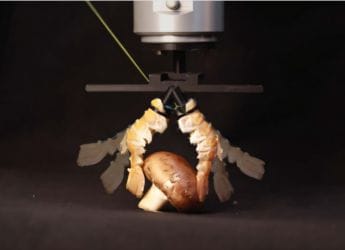- Home
- Others
- Others Features
- This Part of Google's Self Driving Car Crash Report Doesn't Add Up
This Part of Google's Self-Driving Car Crash Report Doesn't Add Up

The car was in the far right lane of a major thoroughfare. As its computer prepared to execute a turn, an obstacle near the curb forced the car to move left, back into traffic - and straight into the side of a passing bus.
Google is taking some responsibility for the incident, saying the minor fender-bender would never have happened if the autopilot hadn't misjudged. But the bus driver didn't slow down to allow the car back into the lane, either, Google points out, so it has reworked its software so that "our cars will more deeply understand that buses (and other large vehicles) are less likely to yield to us than other types of vehicles."
What we have, then, is a minor accident that mostly shows how complicated the human experience of driving really is - and how hard it is to replicate that same behavior in a machine. But others say the unprecedented crash highlights the dangers ahead for driverless car makers. What happens when Google's vehicle injures someone - or worse, is involved in a fatal accident?
(Also see: Google Reports Some Close Calls in Tests of Self-Driving Cars)
In that light, Google's prescribed fix - adjusting how the car interacts with "large vehicles" - seems like it merits a little more explanation. Is there really something unique about how buses and large vehicles behave that preordained this crash? Maybe; buses certainly are bigger and need more stopping room than a typical car. But Google itself points out that "this type of misunderstanding happens between human drivers on the road every day" and is a "classic example of the negotiation that's a normal part of driving," suggesting what occurred between the bus and the car is something that could have happened in any number of variations.
It's just as easy to imagine the driver of an SUV, sedan or a pickup truck behaving like that bus driver did - declining to yield. Without going into the bus driver's motivations, some people behave this way because they're in a hurry. Others might do it because they're feeling vindictive or aggressive. Why does being a bus or "other large vehicle" have all that much to do with it? Is a bus driver truly, statistically less likely to slow down or stop compared to a taxi driver?
Maybe Google's research suggests the answer is yes. The company didn't respond to my request for clarification, though, leaving us to wonder whether Oh, we've fixed it to account for buses now! is really all that satisfying when the human experience suggests large vehicles aren't the only kinds that will cut you off.
© 2016 The Washington Post
Get your daily dose of tech news, reviews, and insights, in under 80 characters on Gadgets 360 Turbo. Connect with fellow tech lovers on our Forum. Follow us on X, Facebook, WhatsApp, Threads and Google News for instant updates. Catch all the action on our YouTube channel.
Related Stories
- Samsung Galaxy Unpacked 2025
- ChatGPT
- Redmi Note 14 Pro+
- iPhone 16
- Apple Vision Pro
- Oneplus 12
- OnePlus Nord CE 3 Lite 5G
- iPhone 13
- Xiaomi 14 Pro
- Oppo Find N3
- Tecno Spark Go (2023)
- Realme V30
- Best Phones Under 25000
- Samsung Galaxy S24 Series
- Cryptocurrency
- iQoo 12
- Samsung Galaxy S24 Ultra
- Giottus
- Samsung Galaxy Z Flip 5
- Apple 'Scary Fast'
- Housefull 5
- GoPro Hero 12 Black Review
- Invincible Season 2
- JioGlass
- HD Ready TV
- Laptop Under 50000
- Smartwatch Under 10000
- Latest Mobile Phones
- Compare Phones
- Realme P4x 5G
- OnePlus Ace 6T
- Nubia Flip 3
- Nubia Fold
- OPPO A6x 5G
- Samsung Galaxy Z TriFold
- Poco F8 Ultra
- Poco F8 Pro
- Asus ProArt P16
- MacBook Pro 14-inch (M5, 2025)
- Poco Pad M1
- Poco Pad X1
- Just Corseca Skywatch Pro
- Honor Watch X5
- Acerpure Nitro Z Series 100-inch QLED TV
- Samsung 43 Inch LED Ultra HD (4K) Smart TV (UA43UE81AFULXL)
- Asus ROG Ally
- Nintendo Switch Lite
- Haier 1.6 Ton 5 Star Inverter Split AC (HSU19G-MZAID5BN-INV)
- Haier 1.6 Ton 5 Star Inverter Split AC (HSU19G-MZAIM5BN-INV)

















